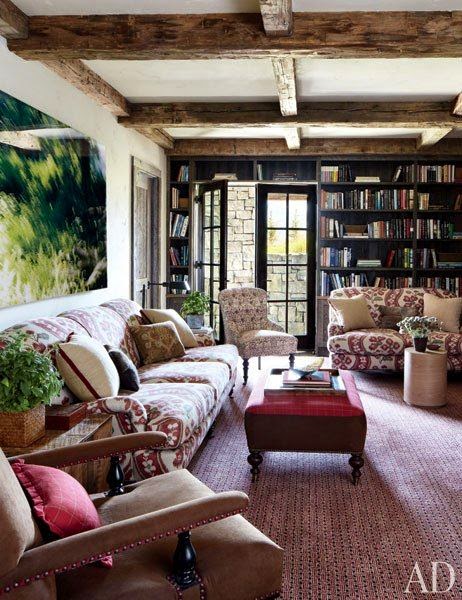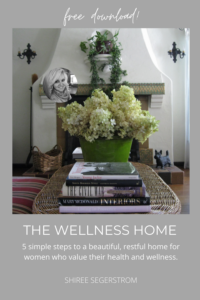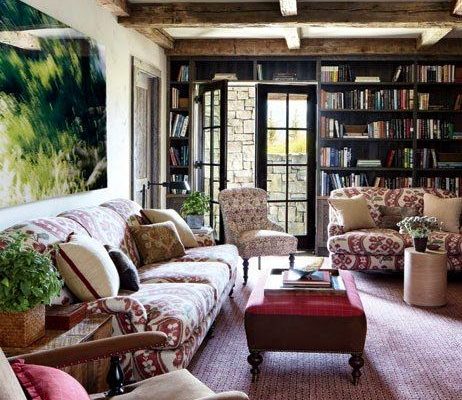Planning Your Next Home Project for 2025
joy of nesting
Planning Your Next Home Project for 2025
Home projects come in all shapes and sizes so planning the perfect one or ones for your household is always a good idea. Here are key takeaways to planning your next home project for 2025.

Identify Things in Your Home that are Working
Start by focusing on the positive aspects of your home. Identify 3 to 5 things that you love and that work well for you. These could be great pieces of furniture, a particular room layout, or even a color scheme that brings you joy.
Recognizing what you appreciate about your space can provide a solid foundation for making improvements that will align well with what’s already there.
Pinpoint Things that Need Improvement
Next, turn your attention to the areas that are bothersome. Identify 3 to 5 things that aren’t working as well as you’d like. These could be a room that feels too dark or a piece of furniture that no longer serves its purpose.
Be specific about what bothers you and why.
Consider What Can Be Repurposed or Rearranged
Before rushing to buying anything new, look at what you already have. Identify 3 to 5 things that could be repurposed or rearranged to improve your space. Sometimes, simply moving furniture or changing the layout can make a significant difference.
Think creatively about how you can use your existing things in new ways.
Decide on What Needs to be Refurbished or Replaced
Next, identify 3 to 5 things that no longer serve you. These could be items that are broken, outdated, or simply don’t fit with your vision for your home.
Either refurbishing the things that are in disrepair or letting go of them will free up space in your home for something better. But more importantly, seeing things that drain your energy every day isn’t healthy. Replacing or refurbishing things that are in disrepair or in a style you don’t care for will free up a lot of energy in your life.
This may sound woo but trust me on this one. The pain of looking at your design mistakes is real.
Plan Your Next Steps
With a clearer understanding of what’s working, what’s not, and what can be changed, you’re ready to plan your next steps.
Create a list of actions based on your findings from the previous steps. This might include rearranging furniture, refurbishing or repurposing items, or making a few strategic purchases.
Consider Using What You Have
Consider using what you have as the catalyst for your home projects in 2025. I’ll soon be launching a free masterclass called The Home Styling Use-What-You-Have Masterclass that can help you with this. You’ll get an invitation automatically if you subscribe to my newsletter (the link is in the navigation bar under ‘Contact’).
Setting a Realistic Budget for Your Next Home Project
Planning a home project can be exciting, but without a realistic budget, it can quickly become overwhelming. Here’s a practical guide to help you set a budget that aligns with your goals and financial situation.
Assess Your Finances
Start by taking a look at your finances. Evaluate your income, savings, and any other funds you can allocate to your project. Determine how much you can comfortably spend without straining your finances. Home projects and improvements unless safety is an issue, usually fall under non-essential expenses.
For the exact formula, tune into my free masterclass, the Home Styling Use What You Have Masterclass where we go over budgeting in the first 5 minutes.
Define Your Project Scope
Clearly define the scope of your project. Are you planning a full renovation, a room makeover, or just some minor updates?
Understanding the extent of your project will help you estimate costs more accurately.
Research Costs
Research the costs associated with your project. Look up prices for materials, labor, and any additional expenses such as permits or design services.
Get Multiple Quotes
If you’re hiring professionals, get quotes from multiple contractors or designers. This will give you a better idea of the going rates and help you choose the best option for your budget.
Prioritize Your Needs
Make a list of must-haves and nice-to-haves. Prioritize the essential elements of your project and be prepared to compromise on less critical aspects if necessary. This will help you stay within budget while still achieving your main goals.
Plan for Contingencies
Unexpected costs can arise during any home project. This will give you peace of mind and prevent financial stress.
Consider DIY Options
If you have the skills and time, consider doing some of the work yourself. Tasks like painting, landscaping, or even simple carpentry can save you money.
Monitor Your Spending
Keep track of your expenses throughout the project. Regularly compare your spending against your budget to ensure you’re staying on track. Adjust your plans if necessary to avoid overspending.
Timing Your Home Projects: A Practical Guide
Timing is everything when it comes to home projects.
Whether you’re planning a minor update or a major renovation, choosing the right time to start can make a significant difference in the success and smoothness of your project. Here’s how to plan your project timing effectively.
Consider Seasonal Factors
Different seasons bring different challenges and advantages for home projects. For example, outdoor projects are best tackled in the spring or summer when the weather is more predictable. On the other hand, indoor projects can be ideal for the colder months when you’re spending more time inside.
Align with Your Schedule
Look at your personal and professional calendar. Avoid starting a project during particularly busy times, such as holidays or major work deadlines. Choose a period when you can dedicate sufficient time and attention to the project without feeling overwhelmed.
Plan Around Contractor Availability
If you’re hiring professionals, their availability can significantly impact your timeline. Contractors often have busy seasons, so booking them well in advance can ensure you get the best talent for your project.
Be flexible with your start date to accommodate their schedule.
Budget for Time, Not Just Money
Time is a valuable resource in any home project. Allocate enough time for each phase of the project, including planning, execution, and any potential delays. Rushing through a project can lead to mistakes and increased costs.
Factor in Supply Lead Times
Materials and supplies can have varying lead times. Order materials well in advance to avoid delays. This is especially important for custom or specialty items that may take longer to arrive.
Consider Your Energy Levels
Home projects can be physically and mentally demanding. Plan your project for a time when you have the energy and motivation to see it through. Avoid starting a project during periods of high stress or low energy.
Allow for Flexibility
Even with the best planning, unexpected issues can arise. Build some flexibility into your timeline to accommodate any surprises. This will help you stay on track without feeling pressured.
Download Your Free Gift
To get started on a home where you feel healthy, happy and connected grab my complimentary design and wellness download, The Wellness Home.
It’s the prettiest little book. It’s a quick read with super easy design solutions that help you lead a beautiful, healthier lifestyle at home, plus my 3-to-5 Things Framework that gives you step by step actions to get started and stay on track.
That’s it for today. Thank you for stopping by!
Shiree’
What is Wellness Design? Learn more about the connection between your wellbeing and your home, featured on Deirdre Fitzpatrick’s Dying to Ask Podcast. And if you’d like to dive deeper into this topic, check out my blog post, “Hiring an Interior Designer”.

